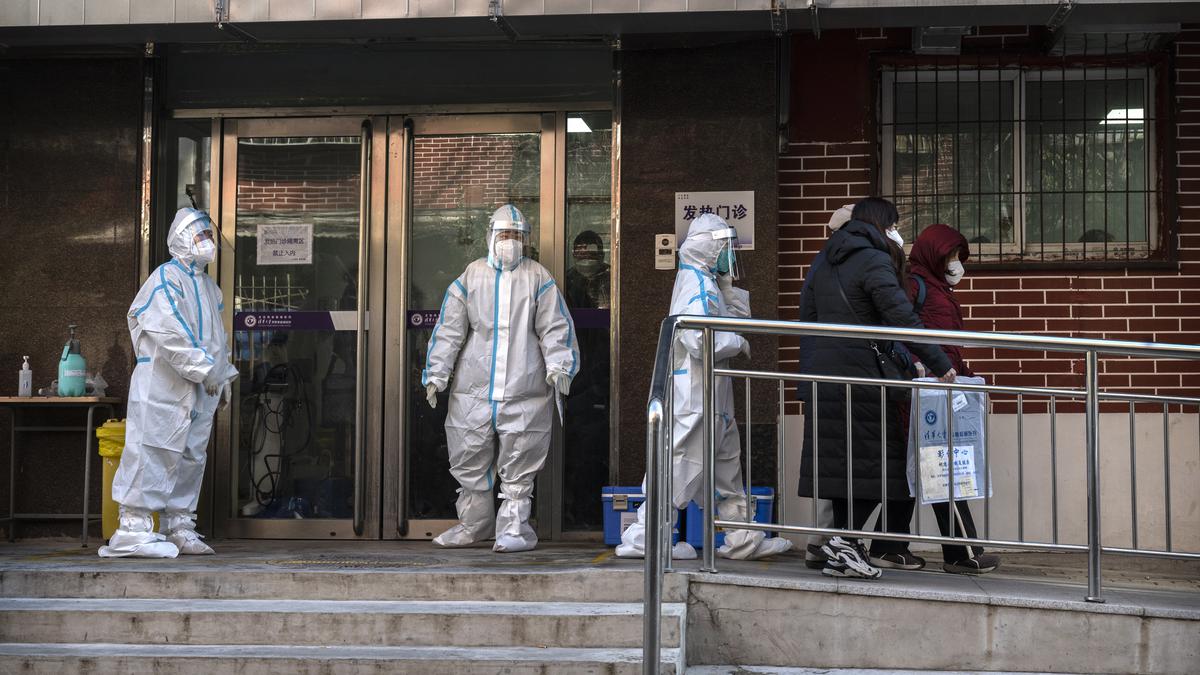News Highlights:
The current surge in Covid-19 infections in China, is believed to be driven by the SARS-CoV-2 lineages that is circulating over there.
SARS-CoV-2 lineages circulating in China:
- How are variants created:
- SARS-CoV-2, the virus that causes COVID-19, is an RNA virus which evolves by accumulating genetic errors in its genome.
- These errors are produced when the virus infects a person and makes copies of itself inside the host’s cells.
- These errors (otherwise called mutations) are therefore a by-product of replication of SARS-CoV-2 inside the cell and may be carried forward as the virus continues to infect people.
- When viruses having a specific set of errors or mutations infect a number of people, this forms a cluster of infections descending from a common parental virus genome and is known as a lineage or a variant of the virus.
- Early identification of emerging variants:
- Genome sequencing of the virus and rapid sharing of data has been key to tracking the evolution of SARS-CoV-2 and early identification of emerging variants.
- SARS-CoV-2 sequencing data previously submitted from China to GISAID, a globally accessible repository of SARS-CoV-2 genome sequences, shows that over the months, the country has seen isolated cases linked to multiple variants of the virus seen previously.
Omicron sublineages which are under monitoring:
- BF.7 Variant:
- The dominant virus strain in China is BF.7, a sub-variant of Omicron that has been in circulation for over a year now.
- There are over 500 Omicron sub-variants currently in circulation.
- BF.7 is the name for the BA.5.2.1.7, which itself has evolved from the BA.5 sub-variant.
- BF.7 is not unique to China.
- It accounted for over 5% of the cases in the US in October, 2022 and over 7% of the cases in the UK.
- When viruses mutate, they create lineages and sub-lineages— like the main trunk of the SARS-CoV-2 tree sprouting branches and sub-branches.
- A research study reported that the BF.7 sub-variant has a 4.4-fold higher neutralisation resistance than the original D614G variant— meaning that in a lab setting, antibodies from a vaccinated or infected individual were less likely to destroy BF.7 than the original Wuhan virus that spread worldwide in 2020.
- A higher neutralisation resistance means there is a higher likelihood of the variant spreading in a population and replacing other variants
- XBB variant:
- XBB is a recombinant of two Omicron sub-variants, BA.2.10.1 and BA.2.75.
- XBB is more immune evasive and more likely to cause re-infection or breakthrough infections in people.
- Like any other Omicron variant XBB is known to affect the upper respiratory tract.
- The XBB variant is likely to lead to a fever, cough, and cold.
What is a recombinant variant:
- About:
- Besides the errors in the virus genome, recombination is another process through which a virus increases its genetic diversity.
- Recombination occurs when, in extremely rare situations, two different lineages of the virus co-infect the same cell in the host and exchange fragments of their individual genomes.
- This generates a descendent variant having mutations that occurred in both the original lineages of the virus.
- Recombination of lineages happens in a variety of other viruses, including those that cause influenza, as well as other coronaviruses.
- Such recombination events typically occur when two or more lineages of SARS-CoV-2 may be co-circulating in a certain region during the same time period.
- This co-circulation of lineages provides an opportunity for recombination to occur between these two lineages of SARS-CoV-2.
- Impact:
- Although recombination has been detected in SARS-CoV-2, it has not yet impacted public health in a unique way.
- There is little evidence to suggest that recombinant lineages have a varied clinical outcome compared to the currently dominant Omicron variant.
- It is certain at this point in time that more data will be needed to ascertain the impact of these lineages on the epidemiology of COVID-19.
Conclusion:
- Since recombinations are extremely rare occurrences, it is unclear how and why the viruses recombine.
- It is, therefore, important to track the recombination of SARS-CoV-2 lineages because it may lead to the generation of a viral lineage that is better at infecting people or transmitting from host to host.
- Monitoring circulating SARS-CoV-2 genomes for evidence of recombination will help gain a better understanding of the ongoing evolution of SARS-CoV-2.
- It will also provide information if a more “concerning” variant of the virus were to emerge.
Pic Courtesy: The Hindu
Content Source: The Hindu



